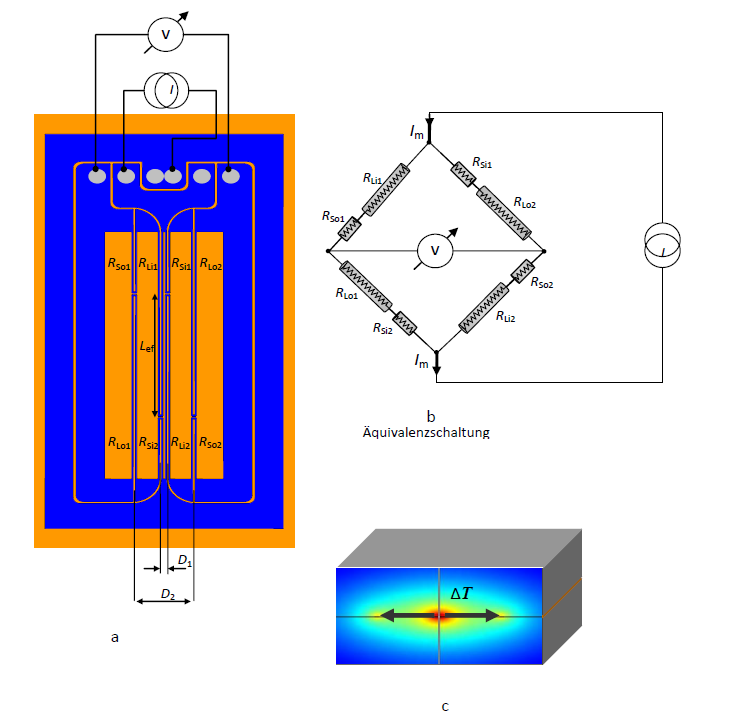Transient Hot Bridge (THB)
What is Transient Hot Bridge (THB)?
The Transient Hot Bridge (THB) is an optimized hot wire method (THW) to measure the thermal transport properties as solids, liquids, pastes and powders, i.e. the thermal conductivity, thermal diffusivity and volumetric specific heat capacity.
THB is a transient method which uses thermoelectric sensors. A printed circuit foil of nickel is embeded between two polyimide sheets. The layout of the sensor consists of four tandem strips (Fig. 2) in parallel (Fig. 1a). Each tandem strip comes in two individual strips, a short and a long one.
Two of the tandems are located very close to each other at the center of the sensor and one additional tandem on either edge. All eight strips are symmetrically switched for an equal-resistance Wheatstone bridge (Fig. 1b).
At uniform temperatures, the bridge is initially balanced, i.e. no nulling is required prior to a run. An electrical current makes the pairwise unequally spaced strips establish a predefined inhomogeneous temperature profile (Fig. 1c) that turns the bridge into an unbalanced condition. From now on the sensor produces an almost offset-free output signal of high sensitivity. This voltage rise in time is a measure of the thermal conductivity, thermal diffusivity and volumetric heat capacity of the surrounding specimen.
The signal is virtually free of thermal emf´s because no external bridge resistors are needed. Each single strip is meander-shaped to give it a higher electrical resistivity. The segmentation into tandems compensates for the so-called end effect, i.e. the temperature drop at both ends of a linear or strip-shaped heater.
In contrast to those bridges having some of their resistors located remotely from the measuring area, a THB sensor is completely surrounded by the specimen. Thus, no errors are introduced by the wiring of the bridge or any external noise pick-up.

THB tandem strip

THB Sensor
Which thermophysical properties are measured?
- Thermal conductivity
- Thermal diffusivity
- Specific heat capacity
Which standard norms are for hot wire/hot strip methods?
- ASTM D 5930-01
Standard test method for thermal conductivity of plastics by means of a transient line source technique - ASTM D7896-19
Standard Test Method for Thermal Conductivity, Thermal Diffusivity, and Volumetric Heat Capacity of Engine Coolants and Related Fluids by Transient Hot Wire Liquid Thermal Conductivity Method - ISO 22007-2
Plastics-Determination of thermal conductivity and thermal diffusivity
